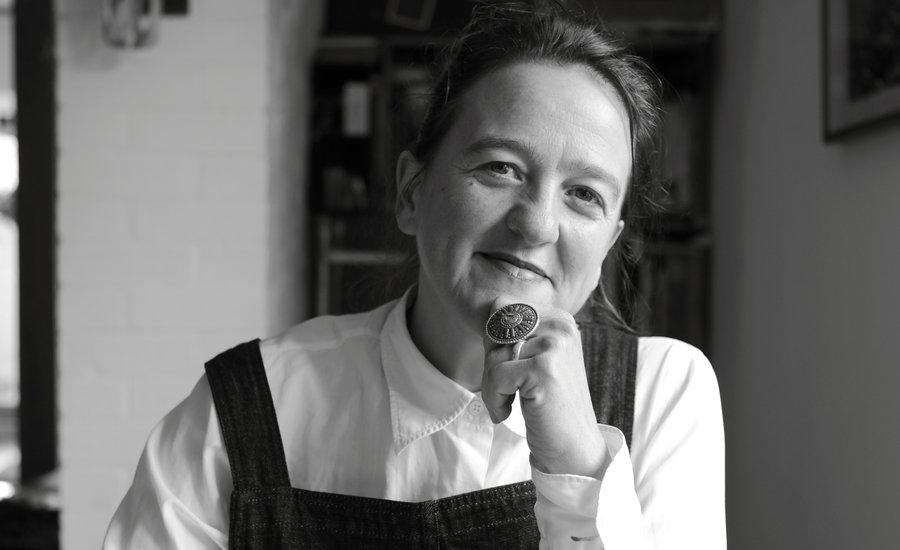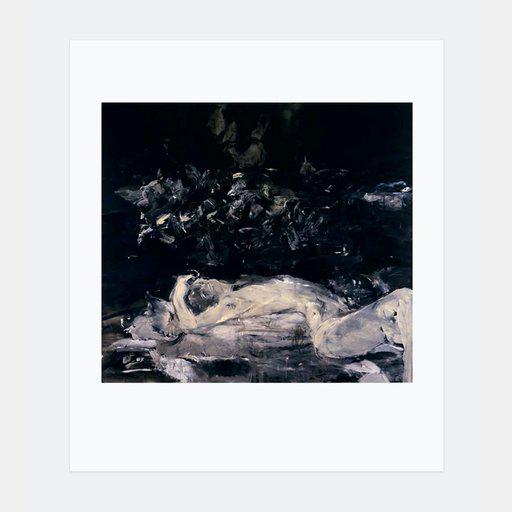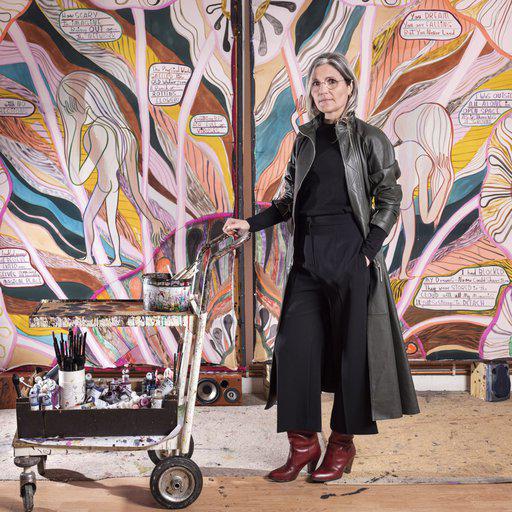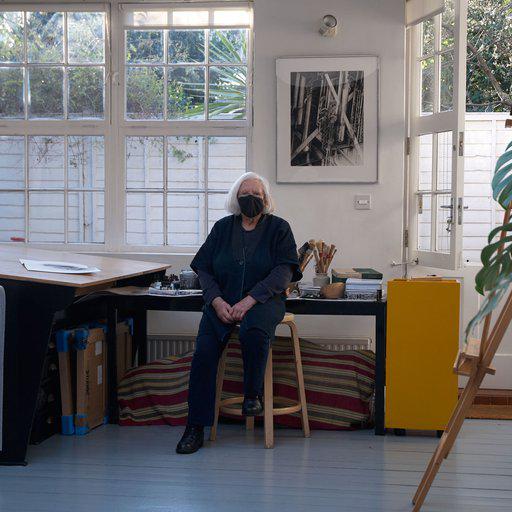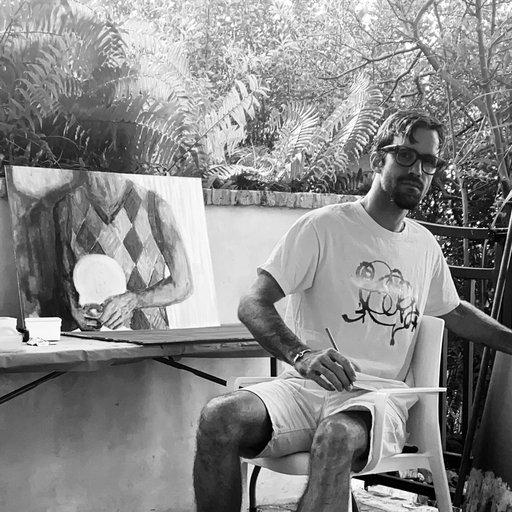The world can be contained – or at least mapped – in drawings, so Tania Kovats believes. Her extraordinarily complex works on paper show how an artist emerging in an age of often anti-visual conceptualism grapples with images, not words, in order to construct memory systems that encompass the world, while at the same time admitting the tenuous relationship of intention to the finished work of art.
Kovats made Only Blue (UK) in 2015, before Brexit. Presciently obliterating ‘Little England’, Kovats overpainted maps depicting different parts of the United Kingdom with white gesso, leaving only the sea in its different shades of eggshell blue untouched.
According to premodern writers on memory, the commemorative process transpiring from the act of reading is an ethical one because reading a book resembles a meeting of minds, a way of making others present, reaching beyond the confines of an egoistic ‘I’.
Reducing the United Kingdom to a collection of pure shapes, white on blue, is a simple visual method of grasping a complex abstraction – the federation of unlike peoples and places – without it becoming overwhelming. Kovats establishes drawing as an aid to counter forgetfulness.
She is one of over a hundred contemporary artists featured in Vitamin D3: Today's Best in Contemporary Drawing , Phaidon's new, indispensable survey of contemporary drawing. We sat her down and asked her a few questions about how, why and when she draws.
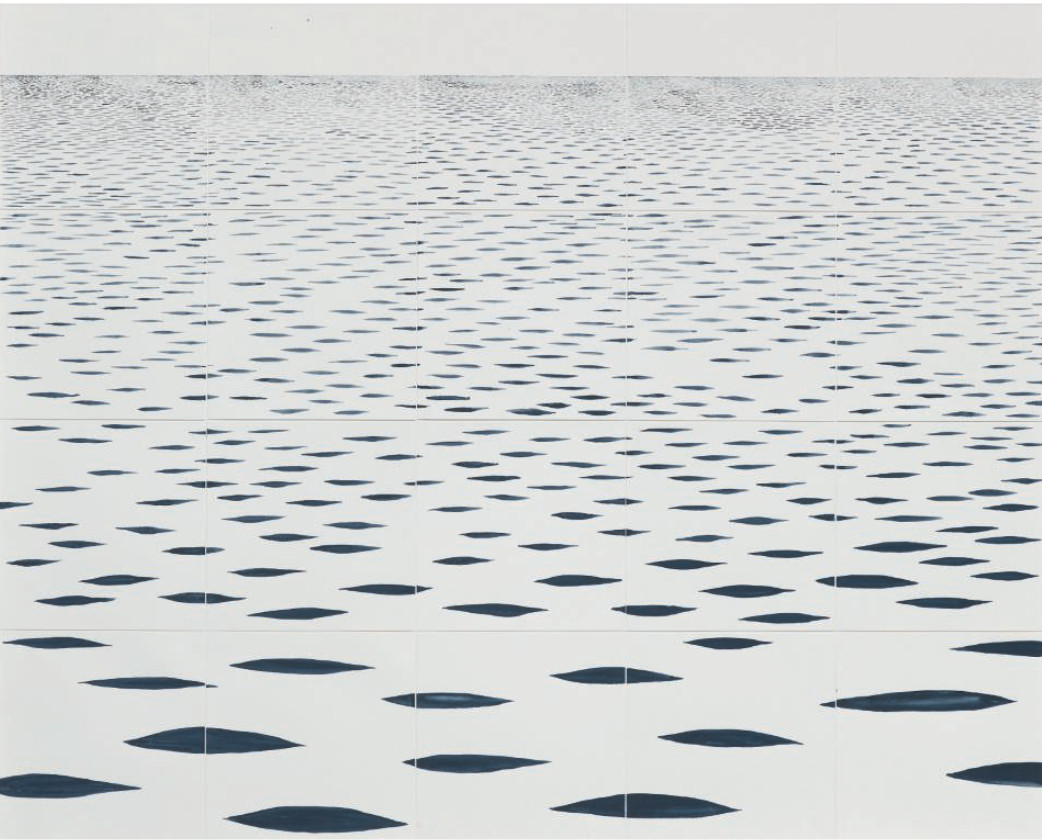
Sea Mark (Payne's Grey) , 2015, by Tania Kovats
Who are you and what’s on your mind right now? My name is Tania Kovats. I live rurally in Devon, the southwest of England. I am happy to have the weather and the season frame each day. The whole country is in lockdown due to the Covid19 pandemic. It’s quiet; a bare boned time of the year where everything is withdrawn, dark, and frozen. Right now, it’s morning so I’ve just done my yoga practice to check in with how I am. Then I walked to the top of the hill and checked in with how the day is. Despite everything going on, my head and heart is now set in a good place for the day. Today is my son’s 22nd birthday so he is much on my mind. I was awake some of the night thinking about his arrival and reflecting on the amazing young human he has become. He is a third-year medical student; and this morning he is on a placement in an ICU unit full of Covid19 patients, learning how to become a doctor.
What’s your special relationship with drawing and how would you describe what you do? Drawing is where I translate my experience into something where I can see it. Drawing is where I can think and work things out. If I couldn’t draw then I couldn’t think. And I couldn’t dream. Drawing is where I communicate. First with myself, then with others.
I make drawings more than I draw drawings. I am a sculptor so I prioritize the materiality and process over the visual, what something looks like. As a maker, there is an endless pleasure to be found in an object-orientated ontology, where I might abdicate being the centre of the creative act, and instead become an agent, or catalyst to a process where the drawing makes itself. Using salt to split the ink that I pour over a hydrological chart, an atlas, or a map of the sea. I make drawings with blotting paper that soak up black ink, leaving tide lines. I flood the paper with ink and salt, a high tide, the water evaporates, the salt crystalizes. I draw towards the horizon making a Sea Mark, again and again, loading a brush and emptying a brush. The horizon between sea and sky is my favorite line, even though it isn’t even a line, it’s a curve. I draw round islands, again and again, inkblots that have a cartographic reference in the real world, that I detach them from, floating one island into a dissolved state with another.
Why is there an increased interest in drawing right now? Drawing is an ever-expanding field, being redefined by its multiple practitioners. There is something slippery about drawing. I think drawing enjoys not being at the centre of things. It is traditionally seen as preliminary, a generator, not an end in itself. It comes first, with something more ‘important’ to follow. Because it isn’t at the centre it becomes the weapon of choice to explore more elusive or marginalized areas of expression, experience and consciousness. Drawing is more portable, affordable, resilient, and direct. Because you can still make a drawing in the most precarious of circumstances it becomes a tool of activists, a vehicle to explore different value systems, a medium of radicalism, of feminism, a testing place, the incubator, the most democratic of art forms, and an art form that is a little less enslaved to the market place.

All the Islands of All the Seas, 2017, by Tania Kovats
What are the hardest things for you to get ‘right’ and why?
I think one of the hardest things is just that - worrying about getting it ‘right’ and working out whose terms or internal logic are judging and active in the drawing. Trusting the process to resolve itself one way or another, and recognising when you need to walk away, wait for something wet to dry, or throw it out. It’s hard to cultivate patience, making the time to draw more. It’s a practice, which means you have to practice, and do it again and again. I draw the body from the inside out. I draw how my spine feels as energy explodes up and down it. Through drawing the invisible becomes visible and communicable. Once I’ve made a drawing I often end up in a battle around privacy, what drawings I can bare sharing.
There are other drawings I make, towards sculptures that have to be shared, they have a job to do that is part of the build of understanding and making. They have to be ‘right’ in a different way.
Is the immediacy of drawing part of its appeal for you?
I like the way you can find your way into a drawing, as they often tell the story of their making. And I trust that that one drawing can speak to another. The drawings of the past speak to the drawings of the present and the future. Drawings move through time free of some of the connoisseurship that securely locates other art forms. The drawings made by an engineer or a surgeon or an explorer or an archaeologist or a child can also make conversation with each other in this gloriously open-ended form.
Can you explain the difference between drawing as a child - something we can all relate to - and drawing as an artist, something most of us cannot? I think of drawing as the most accessible art form and I love the drawings children make! Drawings are often very connected to purpose and direct acts of communication so are relatable. Drawings can also represent some of the most complex, sophisticated, veiled, philosophically demanding thoughts we have so the full range of challenge is here. There has to be space for a drawing to drift into areas that are not immediately accessible, with ambiguous or shifting status that resists interpretation, a drawing that is just itself. What does a drawing mean? or what does a drawing do? are questions that can’t be applied to all drawings, nor should they be.
What do most people overlook when they think about drawing or attempt to ‘assess’ it? I am a maker, so I like to try and understand how a drawing has been made, then why it has been made. Then how does it make me feel. I think about these things possibly before ‘assessing’ what a drawing looks like. If the reason for why it has been made combines well with how it has been made, and I can find a way into what it is trying to communicate, then the drawing is worth thinking about. Drawings tell stories well, the story of their making, the time and state of their making, what they witness, what they hide or reveal.
 Only Blue (UK),
2015, by Tania Kovats
Only Blue (UK),
2015, by Tania Kovats
When do you draw and what sort of physical, spiritual, mental or geographical place do you have to be in generally for it to work? Sometimes I make drawings that imagine things to come, plan and explain things that I am going to make; those drawings have a job to do. This order of drawing might help me remember, understand, apply thinking, analyse and evaluate and make sense of an experience, and create something. I can make these anywhere, even in front of people.
I also have drawings that are made according to certain systems and logic that I develop in series. For these drawings I just have to make space and time in the studio, a task that needs my attention. Then there is another sort of drawing I make where drawing and meditation are intertwined practices for me. Drawing is like breathing and dreaming. I draw with my breath. These drawings pass through me. In the deceleration time of drawing there is an opening in the stream of thoughts and emotions that my mind is cluttered with. Through drawing I try to evolve, develop perspective, distance, and intimacy, and just be. It is where I locate my courageous liquid self. This is when I know drawing is my home. It is my solitude. It is where I am myself.
 Vitamin D3: Today's Best in Contemporary Drawing
Vitamin D3: Today's Best in Contemporary Drawing
You can see more of Kovat's work via her Instagram, @kovats66 . Meanwhile, Vitamin D3: Today's Best in Contemporary Drawing , featuring over 100 artists including: Nathaniel Mary Quinn, Rashid Johnson, Rebecca Salter, Toyin Ojih Odutola, Deanna Petherbridge, Christina Quarles, Nathaniel Mary Quinn, and Emma Talbot is available now in the store . We'll be running more interviews with artists featured in the book in the coming weeks.











